This Photographer Is Sharing His Award After Borders Closed(7 Pics)
Finbarr O'Reilly is a photographer based in London whose work was recently recognized by the prestigious Carmignac Photojournalism Award. O'Reilly had spent many years in the Democratic Republic of the Congo and had intended to cover the potential the region has.
Usually, this award grants 50,000 euros to laureates to cover travel costs related to a project in the field, but with borders closed due to the spread of the novel coronavirus, O’Reilly found himself stuck in London, unable to pursue his project in Congo. Along with the Carmignac board, he came up with an ingenious, and unprecedented, method to continue work in the Congo by sharing the award with eight local journalists in a project known as "Congo in Conversation." The journalists work in close coordination with O'Reilly and cover events in their neighborhoods, adhering to strict protocols to prevent the spread of COVID-19. We spoke with O'Reilly about his decision, and the conversation has been edited for clarity here.
How did you choose to approach the award in this way?
The nature of this grant, like many grants, is that it is given to an individual, and as in previous years, I was tasked with creating a body of work that would then be turned into a book and an exhibition. Of course, with our pandemic situation, that’s on hold for the time being, and we’ve had to rethink how we’re going to do it.
From the outset, I was trying to think of ways to collaborate with Congolese journalists that was somehow hopeful, in a country that is only starting to be emerging from generations of exploitation and conflict and misrule, dating all the way back to the Belgian colonial era, which has cast a really long shadow over the country.
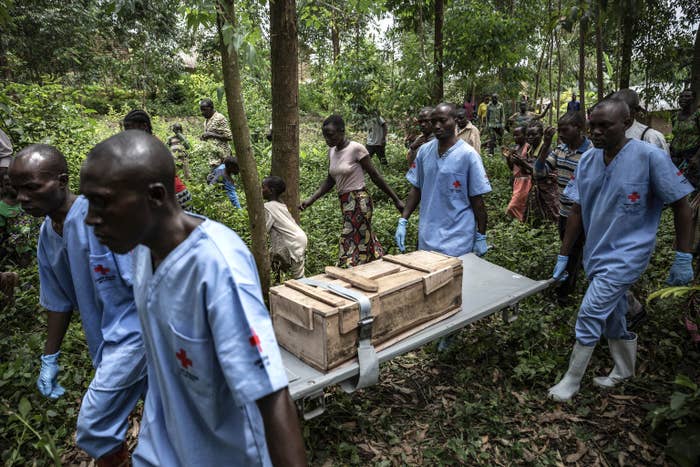
Finbarr O'Reilly
Red Cross burial workers the body of an 11-month old girl who died in the town of Rutshuru during the Ebola outbreak, February 2020.
Part of my thinking behind taking an approach like this was because Congo, like many other countries in Africa, are portrayed recurringly in western media that do not represent a very nuanced take on the place. At the end of last year, I took the commission from the Nobel Peace Prize to be their exhibition photographer around the Nobel Peace Prize winner, and I accepted the commission before we knew who the winner was going to be, and it turned out to be the Ethiopian Prime Minister Abiy Ahmed.
I realized that this was one of those dynamics where you have a European, or Scandinavian, award being given to an African leader, and a European going to create an exhibition about an African leader. I also knew there was a really strong photographic community in Ethiopia, so I got in touch to talk about ways we could collaborate. We ended up sharing the exhibition with several different photographers and myself, and our work was presented equally, which was nice. Three of the seven photographers attended the opening in Oslo.
What this meant was that the opening exhibition at the peace center in Oslo was much richer and more interesting, and the job that I was tasked with doing was much better. And the Ethiopian photographers, who don’t always have a global platform, suddenly had this opportunity to be in this project as well, so everybody gained.
I was hoping to bring an approach like that to the Carmignac award, and in a curious kind of twist of fate, I was unable to travel due to borders being closed. With travel being limited for the foreseeable future, we started to discuss how we could take a similar approach and create remotely a platform from which we could share the work of Congolese journalists and work with them in a collaborative way, curate their work, and have their ideas and voices put forward, and show how in this pandemic that connects all of us in one way or another around the world.
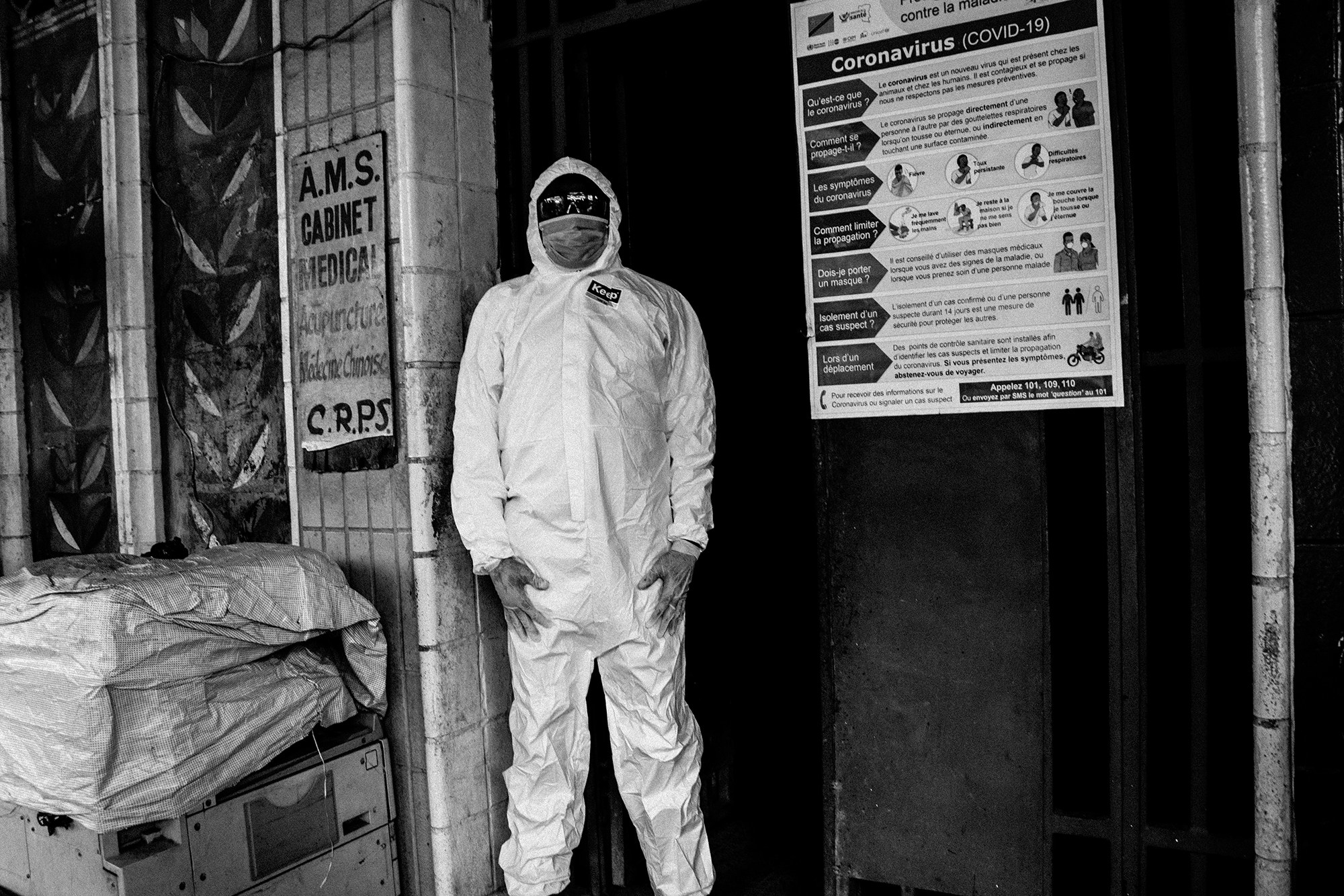
Justin Makangara
A member of the COVID-19 response wears protective equipment at the entrance to a building in the Gombe commune of Congo's Capital, Kinshasa, in mid-March, 2020. The responders were at the main entrance of the building to raise awareness among apartment residents about social distancing and to take the temperature of anyone entering or leaving the building, where there are around 75 families and offices.
Having to deal with this kind of upheaval is strange to most people who aren’t used to disruptions to their lives, in the way that many Congolese might be. It's a country that’s had the deadliest conflict since WWII, misrule, exploitation, Ebola epidemics, measles outbreaks, cholera outbreaks, and a whole host of really disruptive and in many ways traumatic events that have meant that the people there are finding ways to work through these things, which is what we are now having to do.
There is a lot that can be learned from this experience. In the sense that the Congolese have been dealing with the second deadliest Ebola outbreak in history, they were very quick to adopt the measures suggested by the WHO such as hand washing, social distancing. In some of the areas where the Ebola outbreak was most severe, those measures were already in place. In terms of closing down borders and measures that for us seem massively catastrophic and in many ways are, in Congo, these kinds of things are not so unusual, although this is a very extreme situation for everyone involved.
How did you select the journalists and story format?
We’re at the very beginning of this project and figuring out how it will work. I knew some of the journalists already, I'd met them during travels or worked with them in the field. For the others, I relied on the Africa photojournalist database that was put together by World Press Photos. They have experience and we have faith in the professionalism of their work, the integrity of their work, and their ability to take proper precautions to ensure their safety and the safety of others, to be careful about observing social distancing and sanitary measures around washing hands — those kinds of things. We don’t want to put anyone at risk by reporting on this story.
A lot of these journalists are reporting already on this with the blogs, radio outlets, or their own projects. This is a way to amplify their voices on work they’re already doing, taking it beyond the communities that would already be sharing this information, and give it the platform the Carmignac award can provide.
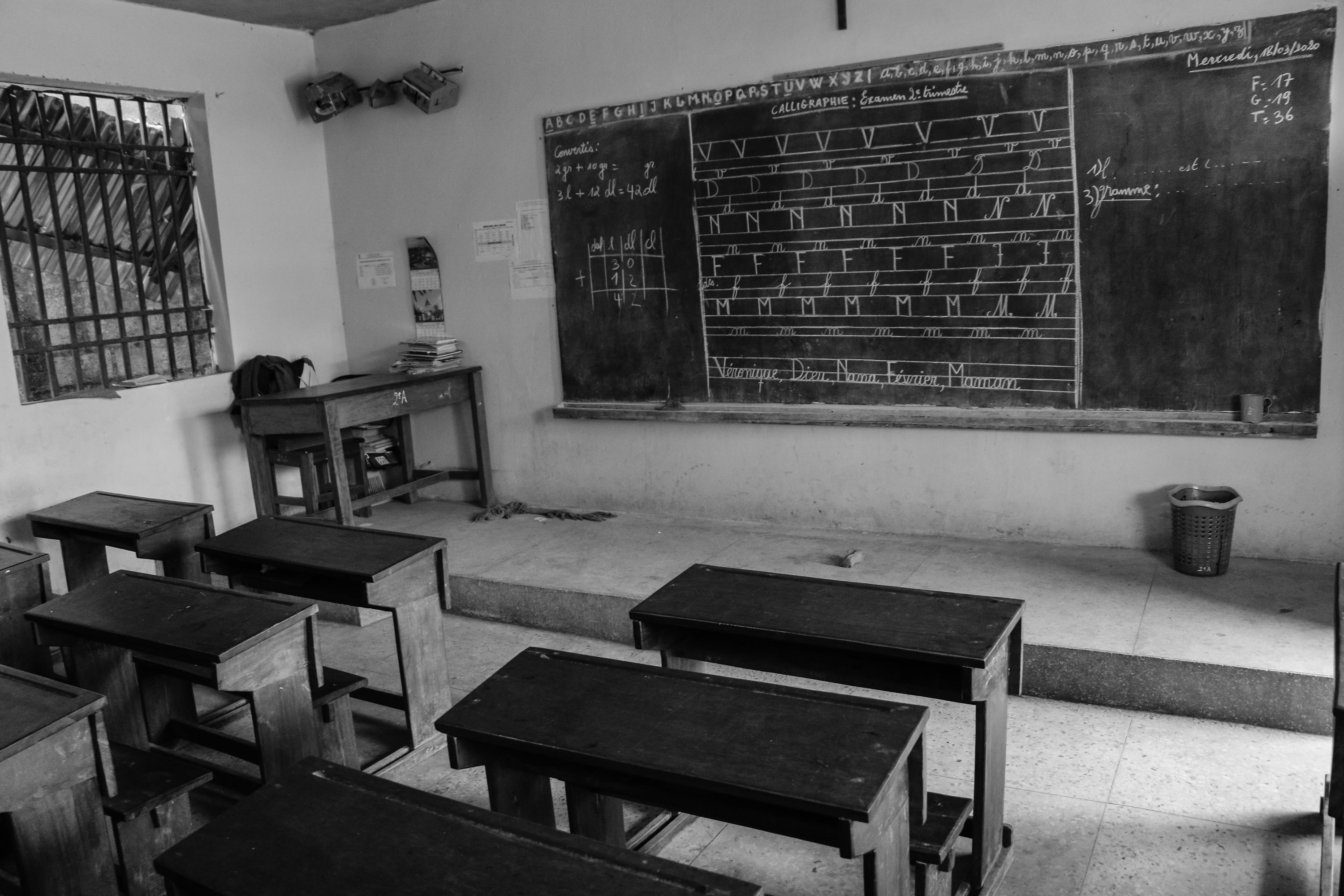
Justin Makangara
An empty classroom in DR Congo's capital Kinshasa in mid-March, 2020. Congolese authorities closed schools and shut down major commercial activities to enforce social distancing in a country where many people weren't taking precautions and didn't believe the virus was a threat to them during the early days of the pandemic.
This is future-focused. What are your hopes for Congo in particular?
My original proposal that I submitted and was accepted by the jury was called “Congo After the Deluge.”
The idea was really to look at to take a cautiously optimistic approach to where the country is now, and where it’s short term future could be. There are many reasons to be skeptical or take a bleak view of Congo because of all these major problems in the past, but if you look at the way the youth movement is challenging those norms, it really is fascinating. There is a youth organization called Lucha, which is a collection of artists and activists who are engaged and involved and trying to figure out social change.
Despite all the issues around insecurity, there are some key things that are happening that point to certain improvements. A few of them involve hydroelectric power plants, which have been built, mostly around Virunga, which would allow for electricity to be delivered and would reduce on some of the deforestation related to charcoal, which is the main source of fuel for much of the community there. The idea is that with the provision of electricity, especially from a renewable resource, it would relieve some of the pressure on wildlife and forests there and create employment for entrepreneurs and small businesses that can then employ people, like unemployed young men who might otherwise be inclined to join a militia group, and this kind of thing.
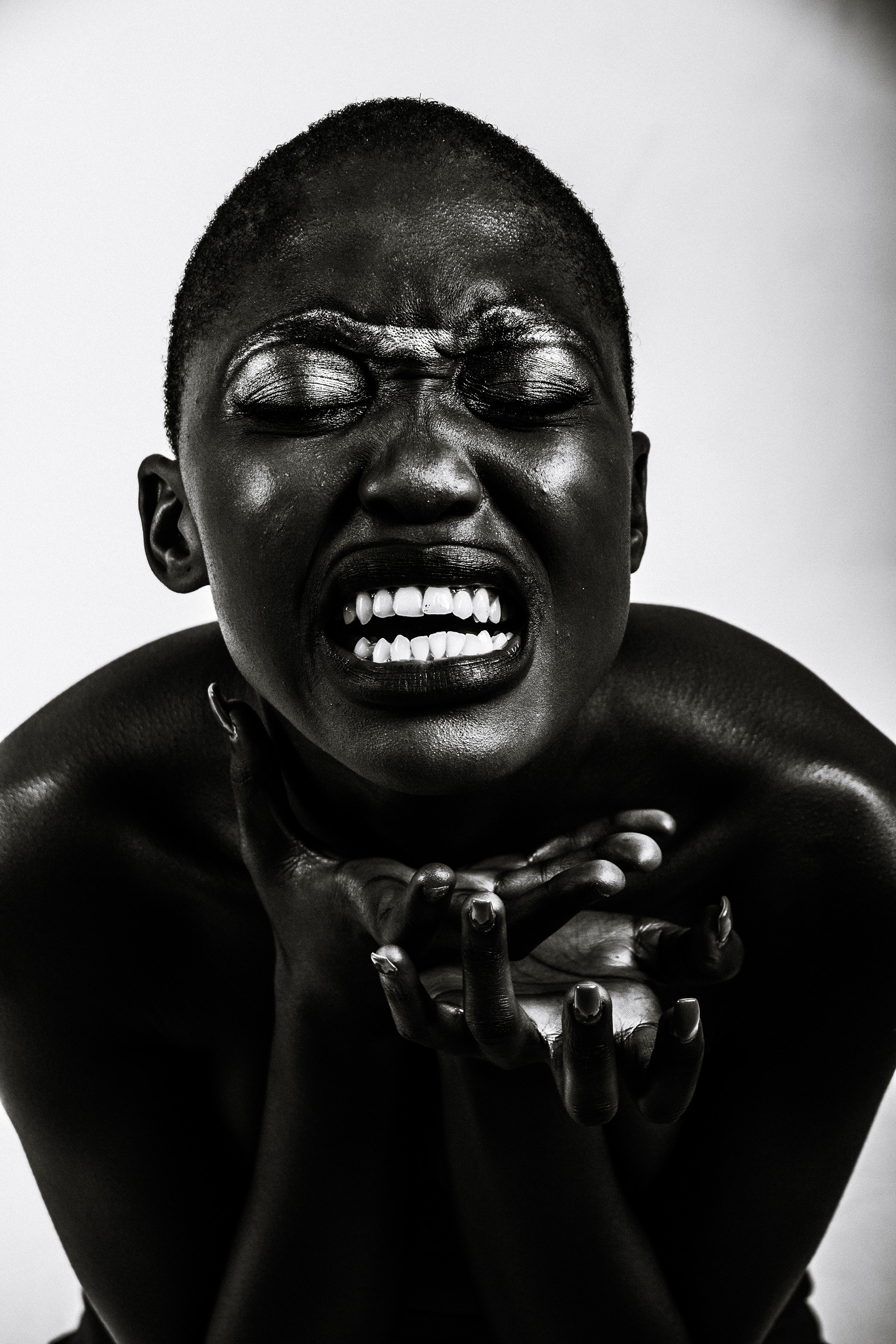
Pamela Tulizo
From the project titled Black Consciousness, an inquiry into our ideas about African women and beauty and how this leads to a deeper exploration into our sense of self-esteem and self-confidence in our post-colonial context.
You have also new laws surrounding the supply chains around minerals put into place to track the minerals that are used by companies like IBM, Apple, Tesla, for batteries for laptops and mobile phones, etc. The government has created these new rules to button up this supply chain, so my plan is to look at how that’s happening and whether it’s really being implemented and enforced in the way that it needs to be.
The other big issue in Congo is gender-based violence and rape. You have the Nobel Peace Prize winner Denis Mukwege in his hospital treating thousands of women over the years, but in addition to well-known organizations, you also have smaller groups, like female Congolese human rights organizations who are looking to change the status quo around what is acceptable within society. They’ve been doing these educational campaigns to empower women and to offer access to medical, legal, and psychological services, and are working to bring the perpetrators not just of sexual violence but also domestic violence to trial.
So there are lots of challenges and there are lots of reasons to be pessimistic about Congo but the focus on this project was to look where things are being driven forward by individuals and small groups of people who are really pushing hard for positive change, mostly at the local level. The idea behind the project, as it now stands, remains the same.
What the local journalists are saying is that in Kinshasa, poverty is really going up amid the lockdown in place. People can’t sell their goods they can’t make money to eat, and as much as that contributor wants to cover the degree of poverty, the focus is really on how people are coping and what inventive and ingenious ways are people managing to find a way forward despite all the challenges they are facing on a daily basis.
This is one of the paradoxes of Congo: It has so much potential, so much wealth in resources, and what you see is this history of abuse and misuse and misrule, but you have a younger generation of activists and people who have had enough and are really pushing for changing, and my focus was on these people pushing for change in the face of these massive obstacles to progress.
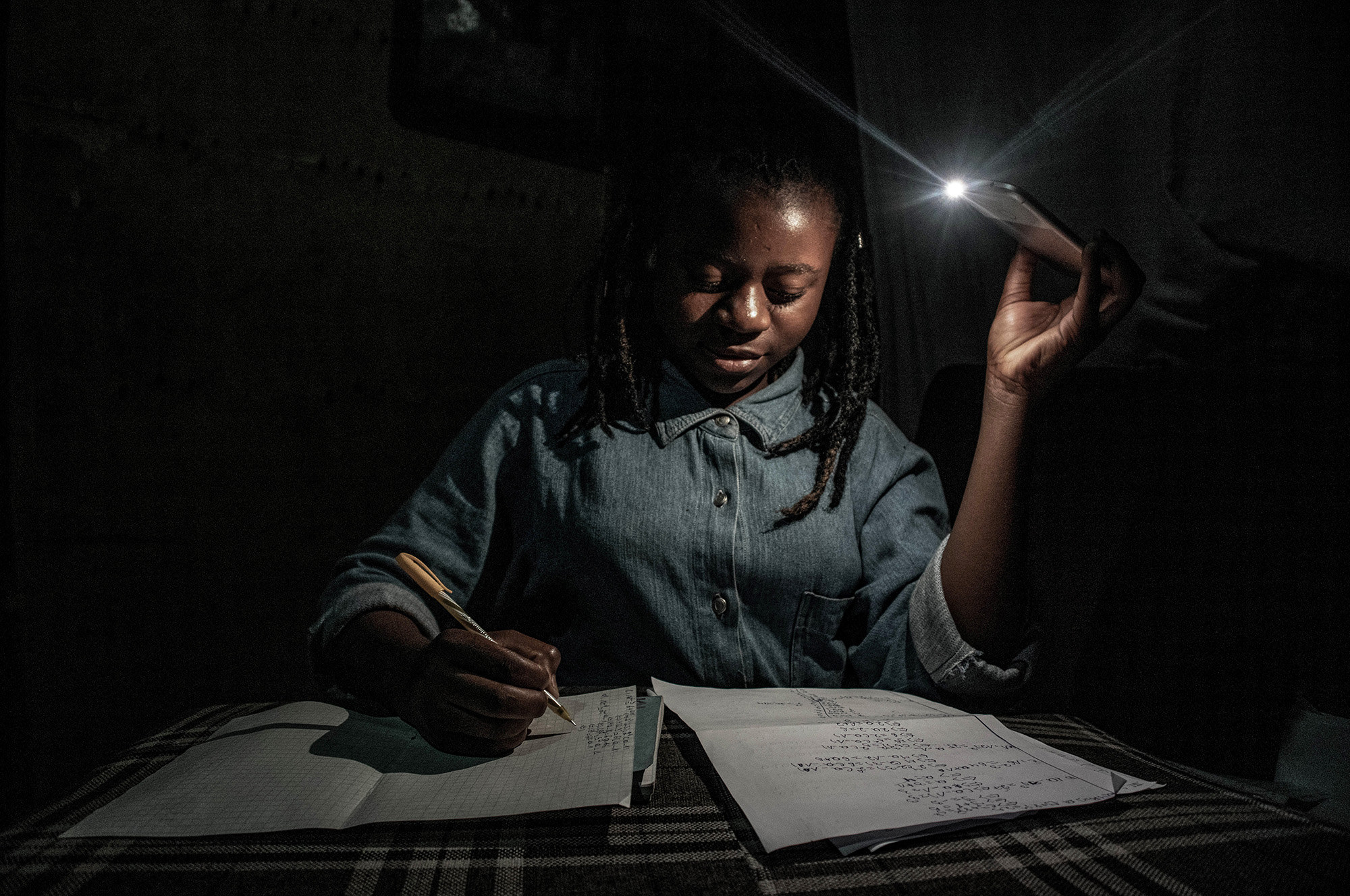
Arlette Bashizi
With schools closed during Congo's period of confinement, my 13-year-old sister Marie studies at home by the light of a mobile phone during one of the regular power cuts in Goma earlier this week.
Is your hope just visibility to the potential or other goals?
I think that there are a couple of things that are happening in tandem really. At the beginning, it's this idea that stories on the continent have, for so long, been defined by Western media that is dominated by people who look like me: white, male, photojournalist. That dynamic has been shifting as African photojournalists find a way to get their perspectives with an outside audience, and this is one way that’s adding to that. It's sharing that power of storytelling with Congolese journalists so that they can really shape the narrative about their country, and trade in a way that they feel is accurate and then yes, for that portrayal to reach a wider audience and just include what’s happening in our world at the moment in this very bizarre time.
I'm in touch with the photographers and the photojournalists almost daily at this point and just asking what’s going on, in their area and in their neighborhood because obviously people aren’t traveling long distances to report.
I’m really relying on them to tell me what’s happening, what’s important, and they will send over text and picture, and we will work on that together to insure, for the photographic part, that the photographs are at a high aesthetic level that we can possibly provide. Some of the photographers that we’re working with are more experienced than others, and it will be a learning process for everyone as far as maintaining a standard that will be true to the Carmignac vision.
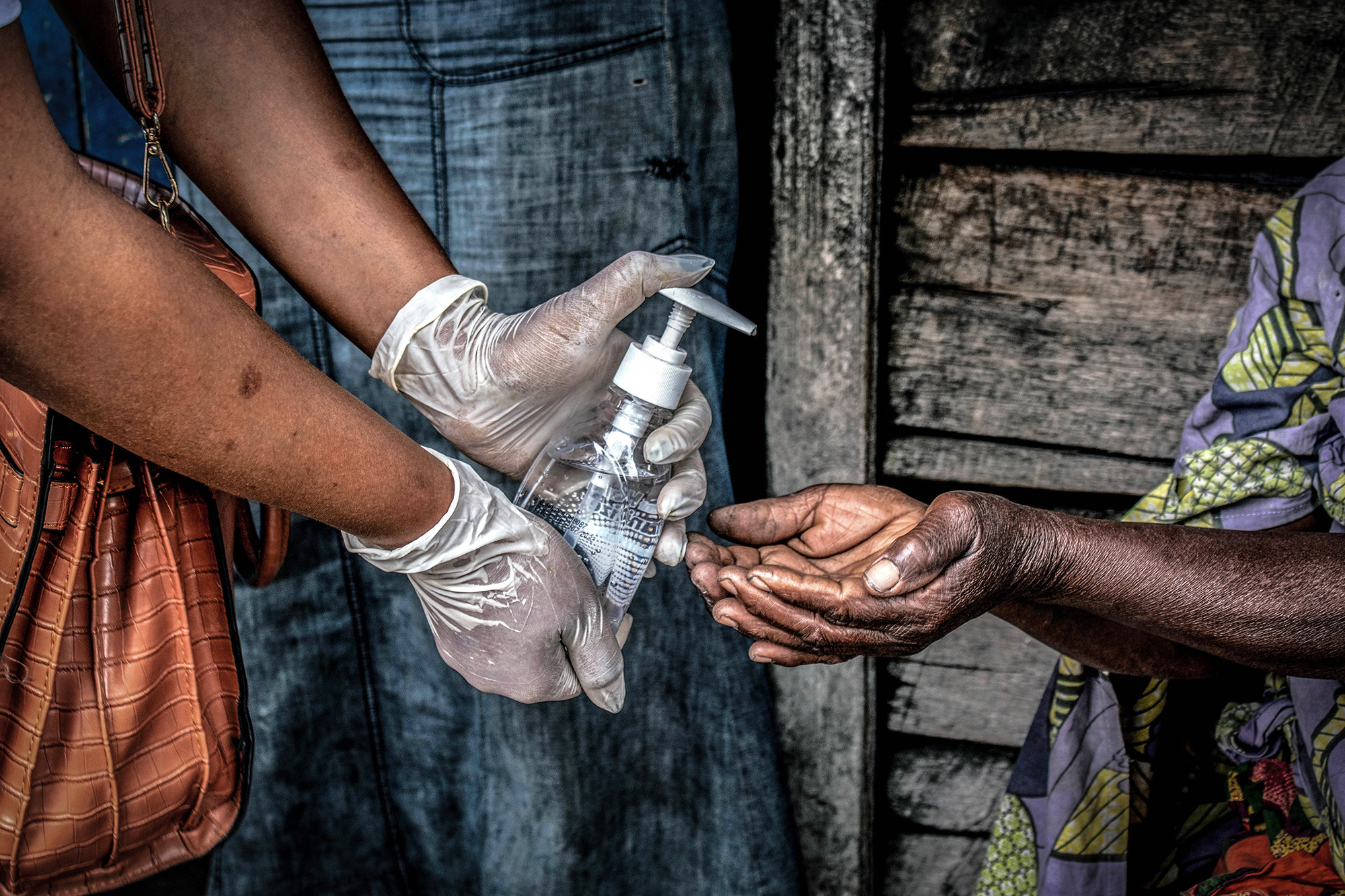
Arlette Bashizi
In early April, three days after the first case of COVID-19 was confirmed in Congo's eastern city of Goma, a woman is given disinfectant in the city's Katoyi neighbourhood, where residents do not have easy access to water.
I think this is the first time in their 11-year history that the fund is doing something like this — not only funding a commission from a diverse team of local photojournalists, but also that it’s doing something not quite in real time — it's not a news agency — but we will be sharing images that are a couple days, a couple weeks, maybe a couple of hours old, instead of waiting six months for the exhibition and the book.
So this is a new take on things for the project, and I am very excited that this is the first time that we’re doing it, even if the circumstances that are dictating that are very troubling for everyone.
In an industry that is so male-dominated, about half of the people involved in this project are women, and that’s significant, particularly in a society that can still be paternalistic, and I’m hoping to add more women as we progress.The nice thing about launching this over the past couple of days is that I'm hearing from all kinds of people who are interested in participating, so I would expect this contributors list to grow. I see this as a rolling project that we expect to last the next couple of months at least. We’ll see over the next few months how it's going and then we’ll adapt as the situation evolves. My project is still planned. I still plan to return to Congo to do my six months of reporting at some point.
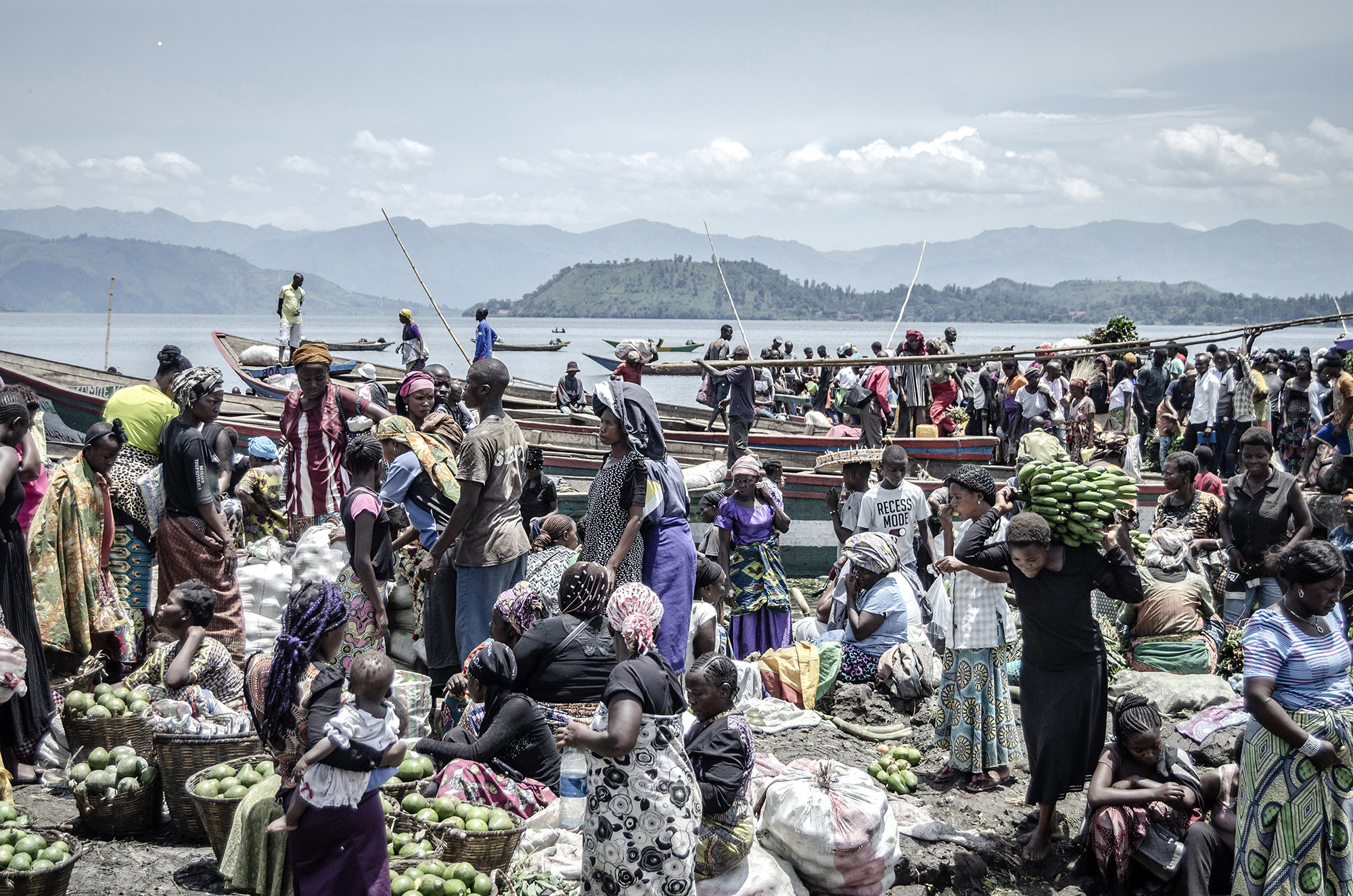
Moses Sawasawa
Vendors and shoppers at Kituku market on the shores of Lake Kivu in Goma, eastern Democratic Republic of Congo, April 2, 2020. Many Congolese survive on their daily earnings and cannot afford to follow health advisories on maintaining social distance.
This Photographer Is Sharing His Award After Borders Closed(7 Pics)
![This Photographer Is Sharing His Award After Borders Closed(7 Pics)]() Reviewed by Your Destination
on
May 18, 2020
Rating:
Reviewed by Your Destination
on
May 18, 2020
Rating:
No comments